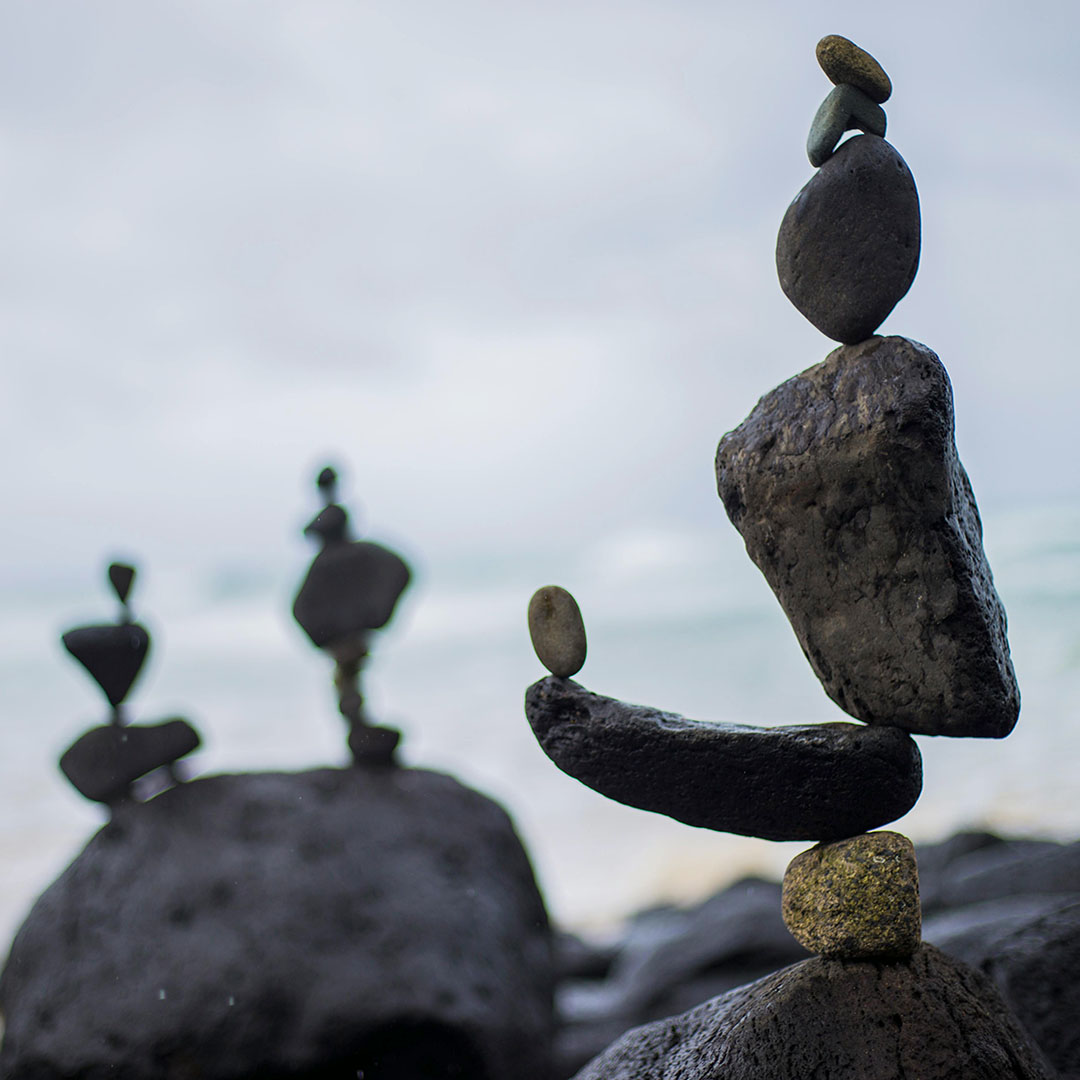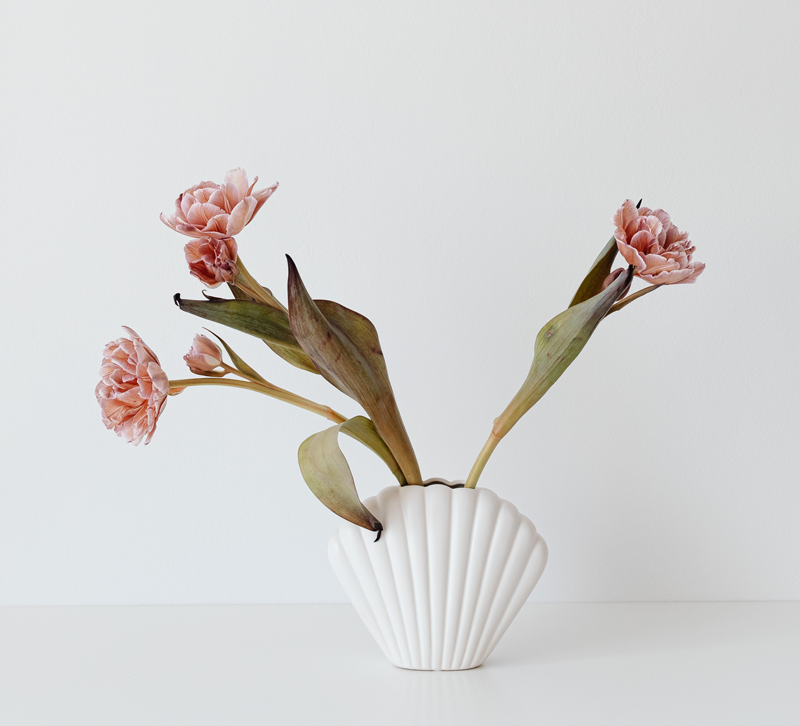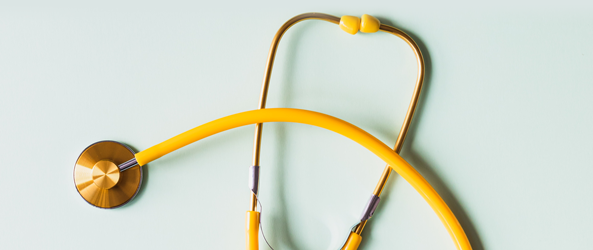Home > SELF-CARE
SELF-CARE
by INELDA

I’ve been thinking a lot about doulas and grief. I so often hear the sentiment that “I felt called to do this work”; my voice is included here as well. But what does it mean to say goodbye so regularly to folks? To hold stories tightly and sit with someone’s pain and to hear the grief of those who loved or cared for the dying person? What is your own reprocessing after supporting someone and their circle of care?
I have heard from some about a wall of photos they keep of those who have died in their care or about a tree in the yard where they tie something symbolic to remind them of the person who died. A study focusing on hospice nurses’ emotional challenges in their encounters with the dying states, “Achieving emotional distance tends to be described as particularly important and as a ‘professional skill’ to avoid long-term negative consequences for the nurses who face the dying on a daily basis.” Now, doulas are not nurses, and many of us don’t see daily deaths, but some of us do depending on what setting we are in. This same study talked about the need for some nurses to live in two worlds separating their personal and professional lives.
But for many doulas I have connected with, we choose to do this work precisely because we don’t want to live in two different worlds. Some of us have either worked in medical environments that became so dehumanizing or other careers that didn’t allow us to explore the human experience—so we left. And I am by no means suggesting a doula should bring “their personal” life into the support they offer, but rather that this work by nature is personal. And yes, of course above all, our self-awareness is paramount when it comes to supporting the dying. Yet what does it mean to be emotionally connected to how you walk with someone at the end of life?
How do we step into a space of being present and also supported? The expansive and growing doula community is here to lean into for reprocessing experiences. Within INELDA’s framework, we have peer groups, meetups, and other ways to come together to process the deep work we do. Maybe that reprocessing takes place in a therapeutic environment or within your doula collective, but what is clear from where I sit is that as emotionally challenging as deathcare work can be, the enriching experience of supporting someone’s autonomy keeps us rooted in this world.
—Loren Talbot

Permission to Rest: Supporting our Physical Health
In this busy world, many of us are pushed to produce, check e-mails, answer texts, and get things organized rather than truly rest. A 2025 study reveals that 66% of employees are reporting some form of burnout. This is an astronomical upward trend that continues to increase each year. With the rising costs of living, increases in technology dependence, and many other factors, people are no longer getting true rest.
According to the book Rest by Alex Soojung-Kim Pang, “Nineteeth-century doctors worried that the fast pace of urban life and the speed of railroads were too much for the human brain and nervous system disorders would become epidemic.” Today, in our extremely fast-paced, same-day-delivery, Instagram life, studies show that 1 in 3 adults may experience some type of anxiety disorder in their lifetime.
- Turn off the technology. When you are not working, shut off the e-mails and texts and calls so your brain can get a break from constantly responding. You do not need to be available 24/7.
- Take a few days off each season. Plan time to completely detach from work and allow yourself time to relax and play. Doing this will have long-term benefits and allow you to be more connected and creative at work.
- Get plenty of exercise in your life. Movement helps your body rest more deeply and provides much-needed stress relief for your brain. Whether it is walking or yoga or lifting weights, this is key to longevity and deep rest.
—Marady Duran

Refreshing Our Needs
As doulas, many of us juggle multiple caregiver roles. Perhaps you straddle taking care of the ones who raised you and your own children simultaneously, you may run care teams or work long hospital shifts, and perhaps you doula animals at end of life or volunteer in all your “free” time. You may have a routine that you planned for yourself when you started your job or when you decided to become a doula–but when was the last time you updated your needs?
Sometimes the things that may have worked for us in 2021 may not be the same things that we need to keep us balanced in 2025. We sometimes lean into the things we think we need rather than evaluating if there is something else that can better support us. Self-care habits can be critically important to our success as caregivers. (I really feel the difference when I miss out on my Sunday morning meditation group.)
But sometimes routines need to be shaken up. It can be as simple as asking yourself, “What do I need right now?” Maybe sitting still for meditation on a particular Sunday isn’t serving me as much as going for a walk in the sun.
Consider adding a monthly or even annual date in your calendar to evaluate your self-care. This valuable reminder can be beneficial to how we move forward feeling renewed. Our environments, routines, and ideas are changing throughout our lives. And while there there is no doubt that we are a culture that prides itself on habits and routines, sometimes breathing new life into what you do can be self-care in itself.
—Loren Talbot

Finding Equilibrium
How do you practice self-care when things are crumbling around you? How do you manage to stay connected to your well-being and equilibrium when you are faced with an onslaught of crises, changes, heartbreaks, and tragedies in the world? How do you stay in your body when it feels like things are falling apart and the enormity of fear, sadness, grief, and anger are bearing down on you?
How do you maintain equilibrium when it feels like equilibrium is impossible to maintain? For those of us who show up as caregivers and space holders, we know the importance of maintaining a balance for ourselves so that we can hold it for others. It is times like these where we ground ourselves in our practices and principles that foster connection. Connection to our communities, our bodies, and our reasons for why we do what we do. In prolonged moments of uncertainty, our connections to these aspects of ourselves and our lives are what keep our equilibrium in check and enable us to move through the difficulty of uncertainty more comfortably.
—Saruh Lacoff

The Sound Within Us
As I write, Ablaye Cissoko and Cyrille Brotto seep through my speakers, after my dog just went off on the mail carrier (for real), a truck barreled up the street, all after a night of little sleep following a very loud evening of tweens at the grief group I facilitate. Our lives are saturated with sounds. Some we choose and others we have no control over—all coming from someone who has fronted a punk band and is no stranger to noise. I’ve grown to realize that when I am stressed or tired, my response to certain sounds activates me negatively. This is often an unconscious response to the intense stimuli around me.
Even when serving as a doula, we may find ourselves in environments where sound is out of our control—hospital machines, gatherings of people, loud TV commercials, and even hallway noises at hospice. Silence is a luxury. Since we can’t all engage in sound baths or choose uninterrupted music to hear daily, how can we work with our own sound to balance the incoming stimuli? One of the easiest ways is through humming!
Studies have show that stimulation to the vagus nerve (the longest nerve in the human nervous system) has, as research published in Frontiers in Integrative Neuroscience puts it, “a positive impact, counteracting the detrimental effects of trauma and chronic stress on autonomic function, disrupting the adaptive role of the ventral vagal complex in managing threat responses, and optimizing sociality, health, growth, and restoration processes.” Some research suggests that humming, in addition to stimulating the vagus nerve, can help reduce heart rate and blood pressure, improve digestion, enhance mood, and boost immune function. Experts share that even five to ten minutes a day of humming can provide lasting benefits.
I have turned off my music, and for this moment the house is quiet. I am humming Wild Mountain Thyme, a Irish folk song that I love. The vibration in my chest area and the beauty of this song are having a clear calming effect on me. Five minutes a day of this sounds like just what I need right now. Sometimes our care is so much closer than we think.
—Loren Talbot

Asking for Care Is Self-care
Receiving and accepting care can feel deeply uncomfortable when we are so used to centering the needs of others in our personal and professional lives. In fact, receiving care for ourselves is an important part of self-care for those of us whose livelihood and identity are built upon giving. We spend so much of our lives giving care to others that it can be hard to know when we need to ask for care, and it can be even harder to accept care from the people in our lives who we pride ourselves on caring for. Accepting care from a struggling family member or friend can feel uncomfortable because it can feel like we are imposing a burden upon them. But what if instead of feeling that we are burdening the people around us by asking for and accepting their care, we consider that by doing so, we are actually giving them a gift? And that accepting their care is not just practicing self-care for ourselves, but allowing them to practice a form of self-care as well?
When we allow ourselves the full spectrum of our humanity by asking for care from the people in our lives, we allow them to connect to us more deeply. By allowing them to connect to us more deeply, we are saying that we trust them with the most sensitive parts of ourselves that we do not share with everyone. Entrusting someone with this sensitive connection allows them to access a part of themselves that they can feel satisfaction from. Not only do they get to do something that feels good—the act of giving stimulates dopamine, serotonin, and oxytocin—but they also get to deepen trust and connection with someone they care for. These are feelings that we know well as doulas and end-of-life caregivers.
—Saruh Lacoff

Ramble On
With our lives overscheduled and our eyes perpetually trained on screens, my instincts around self-care always return me to practices that are simple, untimed, and natural. In this, I find that the most effective way for me to heal and nurture myself is to remember that I am, after all, an animal. And what better way is there to come back to our place in the community of life than to be engaged with our physical environment?
I don’t think any of us needs to be convinced by a clinical trial that communing with nature is highly beneficial for us—maybe even indispensably so. When my brother and I were rambunctious children tearing up the house (and our parents’ patience), the admonition often was “Go outside and play!” Nature was a place to burn off energy, inhale huge lungfuls of fresh air, discover the microcosmic worlds of plants and animals, invent ways to experience our surroundings with pleasure and creativity. Being banished from the house for a few hours was not punishment, I came to understand, but respite and recovery and freedom.
I still believe this to be true. Over time, my ways of being outdoors have expanded, but the one activity that holds steady is walking the land. I’m fortunate to live just a few miles from a nature preserve, open desert webbed with pathways and held by foothills, and at least once a week I lace up my trail runners and hit the dirt. But while it’s good for my body to be in motion, I don’t do this in pursuit of fitness, and it’s certainly not something I track. Headphones are deliberately forgotten so that I can enjoy the real-time surround sound of wildlife and wind and my own footfalls. I move more slowly, taking care to just…notice. I create space to give and to receive.
The very first thing I do when my feet touch the trail is to say hello to everything around me—out loud. I reintroduce myself to the place that anchors me. I greet individual animals as they intersect my path, and I stop and speak with cacti and scrub and rocks that I feel have something to teach or share with me. I allow myself to think out loud, to hold conversations with my beloved dead, to ask for intercession from my concept of a higher being. When my breath comes rhythmically and my heart beats proudly and my senses are free to respond instinctively to shifts in sunlight and temperature and even surprise precipitation, I am in a space where I believe those petitions and offerings of gratitude are better entertained.
By repositioning myself in the landscape, I am reminded to decenter myself, to widen my view beyond the minutiae of my day-to-day life—even the big things are small in the macro view—and to recall my place in the grand order of things. In walking my familiar loop, I am developing a relationship with the land, gradually becoming better able to identify its patterns, evolutions, changes of state each time I visit; this is an intimacy. It shifts my perception of time, expanding it from the nine-to-five or the Gregorian calendar to seasons, to the wildly different life-spans of what inhabits the desert, to original time, cosmic time. This spurs me to move away from urgency and toward synchronicity with the larger forces at work. “Nature does not hurry,” said Lao Tzu, “yet everything is accomplished.”
But you do not need access to a trailhead to adopt this practice if it speaks to you. Nature is anywhere there is flora and fauna; nature is open space, but also pocket parks and the neighbor’s flowerbed and the trees planted in the median. There is life emerging and changing and repopulating and dying in the cracks of the sidewalk. It matters not where you find nature, but that you look for it. So get out there. Walk it off. As we fire up our circulatory system, we awaken our hearts; as we enliven our respiratory system, we increase our ability to breathe; as we aimlessly amble, we find our direction. Going outside is what allows us to be within.
—Kim Stravers
Posted 12/12/24
How the INELDA Emotional Support Center Offers Space for You
When I first started my journey as a doula, I had so many unexpected emotions and internal reactions rise to the surface that I didn’t know how to navigate. I was volunteering at a hospice and experienced unresolved griefs, traumas, and even a small existential crisis. I was unable to process my emotions with anyone in my community, as local end-of-life doulas were a real rarity in my community at that time. This led me to experience burnout, and eventually, I took a break from the work after witnessing a traumatic death in the doula role.
So, when I started my career in social work, I was able to work in partnership with our team to launch the INELDA Emotional Support Center for doulas in 2022. Through the support center, we work with doulas who need a compassionate and reflective space to process whatever they need to give attention to. I have had the honor of being with doulas who were facing a new medical diagnosis themselves and were wondering how they will continue the work of a doula. I have worked with doulas who are grieving the loss of their clients and others who are working through old grief that has emerged while supporting others. Many established doulas who need a space to pause and reflect on their journey also come to the support center.
In this world of constant busyness, media, and supporting others at end of life, it is crucial for doulas to have the time to slow down and get their own support to refill their reserves. As a mental health therapist, I know all too well the need for support when I am feeling overwhelmed or struggle with the things I see and hear daily. I have an amazing mentor and fellow doula who assists me with new perspective and helps me develop practices to build, rebalance, and rest. Self-care has turned into a billion-dollar industry selling us products to “care” for ourselves. But as spiritual coach Elizabeth Cronkhite stated, “Turning inward to truth and finding universal enlightenment itself is the only way to lasting peace.” The doula support center offers our INELDA Tier 3 members an opportunity to meet with a professionally trained staff member to pause, reflect, and be in community with someone who can provide the space needed.
If you are interested in accessing a doula Emotional Support Center session, please email us for three 45-minute Zoom sessions at no cost to INELDA Tier 3 members.
—Marady Duran, MSW, LMSW, MATD
Posted 11/7/24

Refill Your Cup: Recognizing the Signs of Burnout and Prioritizing Self-Care
Working with people in their final stages of life can take a toll, both emotionally and physically. The emotional burden of witnessing grief, pain, and loss can leave you feeling drained. Meanwhile, the physical demands of caregiving, from providing hands-on support to maintaining your own mental focus, can leave little energy for yourself.
If we neglect our own care, we run the risk of burnout and compassion fatigue, which can impact the quality of care we provide. The more we care for ourselves, the better equipped we are to offer our full, empathetic, and present selves to those we are caring for.
Sometimes we don’t recognize the need for self-care until our cup is almost empty. So let’s be mindful of these warning signs:
- Feeling physically drained: You’re constantly tired, even after a good night’s sleep.
- Emotional disconnection: It becomes difficult to connect with others, and you may start feeling numb.
- Irritability or loss of empathy: You find yourself losing patience toward those you’re caring for.
- Mental cloudiness: You struggle to concentrate or feel overwhelmed even by simple tasks.
If any of these resonate with you, it’s a clear signal to step back and make self-care a priority.
The good news is that self-care doesn’t have to be complicated. Here are five simple ways to “refill your cup” while still being there for others:
- Set boundaries.
- Get enough sleep.
- Stay nourished and hydrated.
- Make time for exercise.
- Take time for fun.
Developing a self-care routine can ensure you regularly take time for yourself. Start with small, achievable steps, such as scheduling 10 minutes a day for mindfulness or taking a 15-minute walk. Make self-care a nonnegotiable part of your routine, just like any other important task.
Remember, you are your most valuable resource in this work. By tending to your own well-being, you will continue to provide the compassionate, meaningful care that those at the end of life deserve.
—Katina Perkins
Posted 10/10/24

Knowing the Care We Each Need
A recent, sudden death has left me thinking a lot about self-care. That physical bond immediately broken by the death of someone we feel tethered to can be so incredibly destabilizing. Yet to simultaneously ground myself, I am bringing my doula perspective to this close loss and “doulaing myself” through this experience. I want to be clear that “doulaing myself” does not mean not getting additional support; it is understanding what these support services are and knowing that I would offer them to others in my community. It’s having the doula perspective of autonomy and knowing what my needs are at this moment—but acknowledging they might not be the same for all the others affected by this death.
As I lean into my therapy, support groups, the writing of the obituary, the creation of ritual and the memorial, and sharing spaces both physical and virtual with others who also loved this beautiful person, I am beyond grateful for the support that doulas offer. It allows a framework to contextualize a person’s life, to offer care to those in a time of deep pain, and to know the tools that can get ourselves through the most difficult times. While I did not become a doula to “doula myself,” I am finding myself the recipient of the care and support we all offer.
—Loren Talbot
Posted 9/12/24

Finding the Care We Each Need
Open your eyes, look within. Are you satisfied with the life you’re living? —Bob Marley
This morning I had a conversation about being a death doula with someone in a tangential field. She exclaimed, “Self-care—you can’t do your work without self-care.” And it is true. I’d also like to suggest that we can’t “do life” without self-care. For those of us in the many fields devoted to supporting one another, the self-care piece is essential.
So how do you “do self-care”? My breakfast buddy shared that her self-care is a monthly two-hour bubble bath, because that was what she had the time for. And I honor that. At the same table was another individual, new to the deathcare field, who asked what works for me. I proceeded to tell her about my routine for hospice visits. On the drive up, it’s me and Bob Marley, and then on the way back I always stop at a market for fresh vegetables and fruits. Something about life-affirming nutrition balances me post-hospice visit.
But as I write about it now, just a few hours later: The care I give myself is more of an internal acceptance of what is. It is an awareness of the human connection and our time on this plane. It is the letting go of the things I have no control over and celebrating the daily relations formed. Yes, it’s about the walk I took today, the conversations with friends, the sunbeam I caught, and even texting with my dad. But it’s that softening internally that brings me the care I need. It’s not holding on to outcomes or having a specific approach. It’s honoring the life I am living and feeling satisfied with what I can offer.
—Loren Talbot
Posted 7/25/24

Acceptance as Practice
Doulas have go-to tools that we may use on a daily basis to support our state of mind and enable us to enter our practice with grounded presence. One of those tools is acceptance. As a foundation for mindful awareness our mental health plays a significant role when it comes to having a tangible sense of grounded presence. There are a few methods that we may use on a daily basis to support our state of mind, one of them being the practice of acceptance. As a foundation for mindful awareness, acceptance is a heavy lifter. Allowing thoughts, feelings, and experiences to flow is a key step for processing and holding our hearts with grace. And to do this without censoring or judging sets the stage for openness. Sounds great, right? Sometimes easier said than done.
As an exercise in self-care, we know that acceptance goes a long way in generating feelings of contentment and peace. Often, one of the reasons we suffer is that we get lost in the why, questioning why something is happening, especially something that feels painful or tragic. When we are able to be OK with circumstances without conditions, we become more aware of the part we play in our well-being and release any need to control the outcome. Then we can face situations without attachment. To become OK with whatever is happening stems from the understanding that acceptance empowers us on a deeper level. In daily life, it can feel like a superpower.
There are specific times when we employ acceptance to traverse everything from major life moments to losing one’s keys. No matter what the circumstance is, this practice is a starting point. Can we accept whatever is?
The more we can positively detach from the outcome, the less any worry or stress rules the day. We can continue, knowing we are doing the best we can for all. This is acceptance.
A simple way to apply this teaching is to start with observing. Notice where we may be seeking and perhaps even controlling with the goal of achieving certain outcomes. It’s natural; we all do it. When we see this behavior or these thoughts kicking in, we have an opportunity to pause. During this pause, we can acknowledge and release, offering to relinquish any sense of attachment. This is simple but highly effective.
Another way to offer ourselves the gift of acceptance is taking action without expectation. Removing any notion of results means we are free to act without reward or self-seeking. An example is to pay it forward. Do something for someone else, with no desire for praise or acknowledgement. We often say we’re doing this, but to support a space of acceptance, do it consciously, offering the results to the greater good. Letting go of expectations goes a long way toward being completely OK with whatever is in the here and now.
We can also practice what clinicians refer to as “riding the wave.” This exercise helps us navigate complicated emotions and feelings by treating the arc of sensation as a surfer might approach an incoming swell. Feel the waves start to build, the momentum of the experience, perhaps preparing to experience the crest. Then relax into the storm of forces as they break, sometimes gently, sometimes with tumult. Riding the waves reminds us that “this too shall pass.” Be it good, be it bad, be it indifferent, it’s just a wave and we can be in it—without being a part of it.
—Kimberly Jordan Allen
Posted 6/12/24

Anchoring Yourself in Sound
This week has been all Bill Evans. A few weeks ago, I encountered a powerful piece in The New Yorker titled “The Sound of Grief,” by Matthew Schnipper. Although I stumbled upon it randomly, I have been journeying with it ever since. Matthew shares his love of music, a diagnosis he had to confront (I had the same), his love of Sonic Youth (I’m a fan too), the songs he loved sharing with his son, and then the death of his son, from a condition called AVM (or arteriovenous malformation). I cannot even begin to speak to the pain he articulated so beautifully. But I can understand how his desire to listen to anything waned—how his grief swallowed the music he’d long loved. And I connect with how, eventually, Bill Evans and others brought him back to the music.
In Robert Gass’s book Chanting, the author discusses how music has the power and capacity to both trigger and anchor us. It is known that the sound waves created by music meet the vibrations within our bodies and affect our emotions. Gass states that “the more we open and give ourselves to the experience of listening to music, the greater its impact.” It was not always like this for Gass—the early death of his mother shut him down emotionally. But years later, it was a song that brought him back and allowed him to mourn. The physical and emotional responses that music carries have the capacity to “affect our hearts and minds.”
Gass offers this exercise in understanding the power of anchoring to sound:
Remember a song from your childhood. Hear it playing now, and remember all of the memories and feelings that come with this music. Our sensory and emotional memories have been encoded to the distinctive melodies and rhythms of the music from those times and places. When we hear the music, synapses fire, making connections in our brain; hormones release into our bloodstream, stimulating emotions. The past is conjured and lives once more, so long as the music plays.
—Loren Talbot
Posted 4/11/24

Letting Go of Should
Often, we tell ourselves things should be a certain way, that we should, or they should, or it should. I should call so-and-so, I should make that appointment, they should check in, we should be more connected, that should not have happened. You can see where this is going. This internal narrative can progress in a downhill spiral if we aren’t mindful.
Recently, on a long-distance trip to visit a dear friend I rarely get to see, things did not quite go as planned. We had an elaborate itinerary together—reservations at a restaurant we love, a cross-country ski outing, dinner scheduled with other high school friends, and a yoga class booked, to start. After a few hours, it was very clear that we were both exhausted and just needed some downtime. We each had expectations to navigate, but agreed that we would ditch any plan for the sake of self-care. We canceled plans and listened to music, sat by the fire, enjoyed cooking, played with the dog, and had a sweet weekend doing almost nothing on the original agenda. What’s more, by letting go of our structure, we were able to experience spontaneity and joy, in ways unforeseen. It was a perfect reminder that it’s OK to release preconceived notions, especially if the goals are to reset and restore.
Should can be a way of perceiving that can inspire us to strive, but it is also a point of view that can feed negativity when unchecked. Our words, thoughts, and internal dialogue when it comes to should can affect us significantly, prompting us to push beyond perceived limits or to challenge complacency, or to fall into the trap of self-criticism. This internal drive can inspire us to challenge ourselves and excel. It can prompt us to keep going. Conversely, the internal should can become overly analytical, telling us we’re not doing it right, or worse, that we are not enough. Or, when thoughts snowball, this lens can focus the gaze on all that is not right in the world. This can paralyze us with false notions of perfection and too much focus on the shadows.
So, how do we hold a boundary with this exacting inner taskmaster? Perfectionism and expectation can set the stage for suffering. Self-awareness and mindful preparation usually help us avoid falling into any traps—of course, it’s about progress, not perfection. May these tools serve you and quiet any internal rumblings of the inner perfectionist as needed. Life is precious and the reminder to stay positive always serves. One moment at a time.
A Few Tools to Notice, Redirect, and Ground
Notice how you’re feeling. This sounds so simple. But it is not always the easiest task, especially when there are plans and commitments. Once we notice how we are feeling, we tend to do a better job at using time conscientiously and know when to let go.
Schedule the “shoulds.” We can set ourselves up for success by making nice with the inner perfectionist and building achievable goals throughout the day/week/month/year. Bite-sized milestones keep the inner should-generator satiated and less likely to act up. It also boosts our self-esteem to mark tasks off the proverbial list.
Make time for mindful moments. Pause and notice the good and what’s going well. This helps us to connect with the more objective mind. Awareness can go a long way. Once we take a step back, we can find perspective. What achievements can we acknowledge? Where can we hold gratitude? This quells any perfectionist tendencies, typically, and reminds us to loosen the grip. Holding tightly, to anything, typically does not serve us, and this process of getting mindful shakes us loose.
—Kimberly Jordan Allen
Posted 3/14/24

Turning Down the Sound
It is indeed a radical act of love just to sit down and be quiet for a time by yourself.
—Jon Kabat-Zinn
“What’s your resolution?” I asked someone at a loud, laughter-filled New Year’s Eve party. The room was boisterous with multigenerational celebrations which brought everything from shrieks to video games to a live-streamed concert for adults. I hadn’t really considered what mine was when I had asked (I am more of a birthday resolution type). A week later it came to me. Earlier that morning while the radio shared the morning news, I hustled my child to school, my dog out on a walk, and me into the car for hospice visits … all surrounded with a lot of noise. When I closed the car door for my drive, I realized my resolution: Turn down the sound.
While this is an easy task for some of us, there are those of us whose worlds are louder even though our internal rhythms may be quieter. I crave silence. Having gone to a Quaker Friends school, I value silence above many things. Those formative years spent sitting quietly on a bench with a room full of other quiet teens speaking only when moved serves as the foundation when I am sitting with those actively dying.
The rest of the day looked different. I split my car ride home from hospice to allow for both reflection on the wonderful woman I had seen and my audiobook. I opted to work without music for the day and see how it shifted my thoughts. And I limited myself to fewer phone calls to test what it could be like with only the required sound interactions for the day. I checked in with myself on the hour this day by simply closing my eyes and slipping into silence for a few beats, bathing myself in quiet. A practice I resolve to continue throughout the year.
—Loren Talbot
Posted 1/11/24

Lighting the Dark Night
“Spring passes, and one remembers one’s innocence. Summer passes, and one remembers one’s exuberance. Autumn passes, and one remembers one’s reverence. Winter passes, and one remembers one’s perseverance.” —Yoko Ono
There’s a reason so many winter holiday traditions celebrate with light, from the bulbs on Christmas trees to the candles of Hanukkah and Kwanzaa: It’s dark out there. Earlier sunsets can make 4 p.m. feel like midnight. That darkness, of course, can affect our mood—millions suffer from seasonal affective disorder (SAD). Studies show this can disrupt our circadian rhythms and serotonin and melatonin levels, resulting in depression, fatigue, difficulty concentrating, and more.
The Centers for Disease Control and Prevention reports that older adults are at a greater risk than younger people of developing depression, but are often misdiagnosed or undertreated for it. From social isolation to comorbidities, they are at higher risk for all types of depression. Research also shows that caregivers are vulnerable to similar symptoms. For both groups, this can be exacerbated by shifts in hours of daylight. This means it’s time to double down on self-care as you tend to others who may also be suffering from depression in addition to their end-of-life experience. Give these tips a try as you navigate this time of year.
Get outside. Though we may want to burrow under the covers or at least stay in, putting on warm clothing (if you’re in a cold climate) and stepping outside every day—especially in the morning if possible—can make a huge difference. Take a daily walk or find a spot where you can sit and catch whatever sunlight the sky sends your way. If it’s icy make sure you get some ice cleats to put over your boots. Pausing to notice the beauty of nature in winter, even if it’s something as simple as watching squirrels scramble for extra nuts, can also help you more peacefully embrace the season.
Try light therapy. Many studies have validated the effectiveness of light box therapy. The light you use should have 10,000 lux for best results. (If your light is lower than that, follow these guidelines.) Sit in front of it without staring at it for 20 to 30 minutes a day. If you have bipolar disorder or an eye-related medical condition, consult your doctor before you try this.
Reach out. If you notice that a touch of blues is becoming more serious—maybe you’re sleeping excessively, having despairing thoughts, gaining or losing weight, or are unable to feel even a little joy—then find a professional who can help support your needs. Winter can be rough on us humans; it’s essential to find the light where we can.
—Valerie Reiss
Posted 12/14/23

Sitting With Uncomfortable Spaces
When I was last pregnant, a friend of mine was a newly minted birth doula and asked if she could be my doula. I replied, “Of course!” We didn’t talk too much prior to that day, but I shared some of the things I was hoping for during this birth and left it at that. The next time I saw her was early in the morning when she walked into my bedroom and sat quietly beside me as I labored through a contraction. She didn’t announce herself or even start talking; she just entered, sat, and held my hand. Throughout the labor, she didn’t try to help me with any doula techniques, nor did she coach me. She would quietly reassure me with a few words, “You are doing it.” She made me feel safe in the process of birth—how? By sitting with me in my uncomfortable space.
My friend taught me a lesson that day that impacts the work I do now. She taught me that doulas, birth or death, do something fundamental—they sit with you. They are there to remind the person that they are not alone and that they are supported. Sitting in uncomfortable spaces requires a certain willingness to feel alongside someone, while still holding the boundary of “I am me” and “You are you.” Sitting in uncomfortable spaces tenderizes our heart and can feel heavy and even reawaken grief we have tried to hide away. Sitting in uncomfortable spaces asks us to also sit with ourselves. It is less often about how we respond; it is always about just moving through with them.
At this moment in time, this idea of sitting with uncomfortable spaces feels like a relevant practice. Many of us may feel broken and hardened, grief-stricken and hopeless. And just like what we do with our clients, friends, family, we sit near and move through it with them. I offer my beautiful friend’s wisdom as a new and beginner doula—walk in, sit near, and move through together.
—Omni Kitts Ferrera
Posted 11/09/23

Gratitude for Health
Martin Seligman, leader of the field of positive psychology, has a widely used exercise called “three good things.” In this exercise, participants think of three good things that happened in their day, write them down, and reflect on their role in what happened.
Studies have shown positive results in health care environments from this exercise. A 2021 study from the University of Tokyo systematically reviewed the effectiveness of gratitude interventions on individuals. The majority of gratitude interventions studied incorporated a gratitude list or journal. Some studies integrated gratitude activities into the program that may incorporate an expression of gratitude to others through telling them directly or through letter writing.
I have been the happy recipient of this: My dear friend has shared a gratitude list in my birthday cards over the years. This technique, the global study noted, is successful in many environments in large part due to the ease of creating a list. There was a correlation between improved perceived stress and depression for those who created more regular gratitude lists.
Consider taking a moment today to draft a list for yourself or another and share the things you are grateful for. I am starting with:
- My friend who introduced me to gratitude lists.
—Loren Talbot
Posted 10/05/23

Remembrance: Turn Toward Love
This is a meditation adapted from the book Radical Compassion: Learning to Love Yourself and Your World With the Practice of RAIN by Tara Brach, founder of Insight Meditation Community of Washington, DC. The book outlines her practice called RAIN, which is an acronym standing for four steps: Recognize, Allow, Investigate, and Nurture.
Set your intention to turn toward love when you become aware of feeling lonely, depressed, anxious, caught in self-judgment, or blaming others. Give yourself permission to experiment with different ways of reconnecting with love. Here are some possible approaches:
Send a caring message or prayer to yourself (silently or whisper out loud). Examples:
“May I be happy,” “May I feel safe,” “Please be kind,” “It’s OK, sweetheart,” “I’m sorry and I love you,” “May I love myself into healing.”
Imagine receiving a caring message from a loved one or compassionate figure.
Place one or both hands on your heart; hug yourself; place a comforting hand on your cheek; put your palms together in prayer.
Imagine yourself surrounded by and held in warm light; imagine yourself being embraced; imagine you yourself are embracing your inner child.
Imagine and feel what it’s like to let in love. Visualize the eyes of a loved one who is feeling and expressing their care, and then sense your body allowing the warmth of that care to wash through you, to bathe you.
Send your care to dear ones, others in your life, and those you don’t know. You might do this through a message or an image.
The more you intentionally turn toward love—expressing it and letting it in—the more your natural care and compassion will arise spontaneously throughout the day.
Posted 9/12/23

Reflecting on Our Impulse to Care
by Dr. John Eric Baugher, PhD
It is a natural human impulse to want to reach out and support others in their grief, and often that impulse arises for us after we ourselves have suffered trauma or loss. Compassionately caring for others does not require that our motives are somehow “pure,” that we have resolved or brought closure to our grief, whatever that might mean. The question, instead, is whether we have an honest recognition of where we truly are in the moment. Have we examined whether turning toward the pain of others is integral to our own path of becoming or is instead a strategy for running away from our own grief?
Take some time to consider your own impulse to care. If you feel a strong desire to show up for others who are in pain, is the desire matched by a willingness to bring the same loving attention to the grief of your own life? Has grief become for you a path of self-illumination, or do you tend to turn away from the voice of your own pain?
Contemplative caregiving involves stretching ourselves and growing into the unknown. But at times, our own grief may be too raw. We may require time to replenish ourselves through self-compassion before we can embody a loving presence for another. What forms of care are you truly prepared to offer at this point in your life? Can you accept where you are, with honesty and self-compassion, in gratitude for what you are able to do and give at this time? And if there are ways you would like to serve, forms of care you would like to engage in that, at this point, seem beyond your capacity, how might you attend to your own growth to allow your impulse to care to flourish and bear fruit?
I encourage you to engage these questions in a way that feels most natural and helpful for you, perhaps through journaling, in conversation with others, or as part of a practice of quiet reflection.
Except with permission from Contemplative Caregiving: Finding Healing, Compassion & Spiritual Growth Through End-of-Life Care (Shambhala Publications, 2019). For more information on the book and services, visit John Eric Baugher’s website.
Posted 7/27/23

Real Self-Care
by Pooja Lakshmin, MD
Excerpt from chapter 5, “Real Self-Care Requires Boundaries: Moving Past Guilt”
My patient Angela, thirty-two, had a tendency to be the fixer in her household. Run out of toilet paper? She’d jump up for the Target run. Boyfriend locked out of apartment? She’d hop in a cab to save him. One day she shared a pretty revealing story with me. Angela and her boyfriend had recently moved in together and decided to adopt a puppy. She was juggling working part time as an executive assistant and getting her master’s degree in social work, and she was approaching her finals week. Not only that, on weekends, she had to do the clinical rotations required to finish her degree. One Saturday, her boyfriend was out with friends while she was at her clinical site. That morning they’d made a plan for him to be home by 3:00 p.m. to take the puppy, Elie, for a walk. She received a text from him at 2:45 p.m. saying that his buddy wanted to grab dinner together, so he wouldn’t be able to make it home to walk Elie. He wanted to know if Angela could finish up her work early and make it home. Angela immediately rushed to the rescue, quickly finishing the last of her charting and asking her supervisor if she could snake up her evening clinical shift the following weekend
In our session that week, Angela shared this anecdote as an example of how, while her partner has dropped the ball, she was able to save the day. She was feeling good about her ability to juggle more than seemed humanly possible. She explained, “I know I’ll have to make up that evening shift, but we don’t have plans next weekend, so it worked out.”
I asked Angela why she decided to say yes to her boyfriend’s request when they had already made a plan that he would be responsible for Elie that afternoon. Didn’t this change in plans make more work for her? Angela was a little taken aback.
“Well, my supervisor was really flexible and so it’s fine.”
“But didn’t you come up with a plan that morning, and hadn’t he agreed to be responsible for Elie that afternoon?”
Angela, looking sheepish, said, “I guess it didn’t occur to me to say no to him…”
I pushed her a little further. “I’m noticing that we have spent so much of our time together talking about how important your master’s program is to you. What do you think of the fact that you were willing to quickly drop your priority so your boyfriend could spend more time with his friend?”
In my practice, I see many women like Angela who struggle to set limits with their partners, families, and even friends. While Angela’s situation may seem extreme, you might notice varying degrees of this behavior in your own life. For instance, like Angela, in the heat of the moment you might not recognize setting a boundary is an option. Or perhaps you’re aware that you want to say no but are uncomfortable setting a boundary that might lead to conflict. Or perhaps you feel too much guilt to firmly communicate your choice. Failure to set boundaries not only mires Angela and women like her in unfulfilled activities, it also prevents them from having the mental and emotional bandwidth to engage in real self-care practices.
The first principle of real self-care, then, is setting boundaries. Boundaries are cornerstone; without them, none of the rest of the work can happen. Real self-care is all about making space for you—your thoughts, feelings, and priorities in life. Most of my patients need to fight their way to having this space, because they don’t see their time and energy as belonging to them. And, again, this isn’t their fault. Our entire system is built on the premise that women’s time—and especially the time of Black and brown women—doesn’t belong to them. Setting boundaries is how we take our time, energy, and attention back.
Permission from Viking, an imprint of Penguin Random House LLC, 2023.
Posted 6/15/23

Actively Hearing Oneself
As doulas and care providers we are taught to listen—to pause and truly hear what the person across from us is saying. We ready ourselves prior to connecting, working to clear our mind, sometimes meditating, preparing ourselves to attend to the needs of another. Prepping ourselves to actively listen is a practice in its own right, but what if we decided that the person who needs to be heard is ourselves? Determining what our own needs are can be addressed with the same care and attention that we provide to others.
Cultivating the relationship with oneself is essential to being able to identify what those needs are. To be able to “sit across” from yourself and actively hear the internal voice is what we need to set our priorities and boundaries. Too often we are responsive and take on the needs of others before ourselves, but what if we tended to those needs with the same focus and care that we do when supporting others? This internal shift of self-awareness can provide a newfound way of walking through the world with reconfigured priorities.
Hear and name these internal needs, then address them as you would with someone you are supporting. Choose the grounding practice that you most connect with and prepare to ask yourself some of those gentle questions that we often ask others. Actively hearing your own answers may come as a surprise.
—Loren Talbot
Posted 5/11/23

Broaden the Space Around You
When my kids were very little and in full play mode, the noise would often overwhelm me. Sound has a direct connection to our brain that cannot be turned off. Even when we’re sleeping, sound is received and processed by the brain. If the sound perceived is novel or a warning of danger, it can evoke a sense of hypervigilance and even a flight-or-fight response. Sound inherently affects our nervous system. Listening to my kids play posed no “danger” to me, but my system was certainly processing it that way. I would feel jumpy and slightly irritated, and I had a deep sense of urgency to either stop the noise or flee from it.
Our house had stairs that led to the second floor and a small landing with an overlook, which allowed you to see down into the living room area. One day, feeling enveloped by their glee-filled, high-pitched noises, I became aware of the irritation in my body and that familiar feeling of wishing to evade the cacophony of sound. I’m not sure what spurred this idea, but that day, I walked halfway up the stairs and sat on the landing and just watched them play. I actively took some deep breaths, and as I watched them play, I told myself, “They are OK, you are OK, we are OK.” In no time at all, I noticed the sense of urgency dissipate; my skin no longer had that certain itch of irritation. I sat there for a few minutes and then went on about my day.
Using the principle of self-awareness, I validated what I was feeling and organically found a way to work with it. Space. I gave myself some room to see more of what was happening. I moved slightly away from the sound source, creating a buffer for my nervous system. I took some deep breaths and allowed myself time to orient. I renamed this landing “my perch,” and it became a go-to in my toolbox.
As a birth doula, death doula, and almost an RN, I find myself using this tool of “space” all the time. In all experiences of the body, there is the possibility for noise. Birth ushers in all sorts of vocalization. Death presents sounds of a body resolving, moving into dysrhythmia. If we are in a medical landscape, the beeping of machines may add their own layer of noise. Sometimes just hearing news of a diagnosis or an advancing prognosis can be enough sound to drown out everything else in the room. When I notice the familiar rise of overwhelm as it somatically presents in my body, I visualize my “perch.” I breathe deep breaths, sometimes even holding at the top of the inhale and then slowly releasing the exhale. I move my gaze from a myopic viewpoint to a peripheral one. I wait in this space until I feel less charge in my body. When I no longer want to run/fight/hide, I know the tool has done its job.
Space can be manifested in many ways. I invite you to begin with your self-awareness. Notice when sound seems to overwhelm you. Look for your perch and take a few moments to breathe, use your peripheral vision, and orient yourself. Perhaps your nervous system will soften its drive to protect. It may take a few attempts, and if your body needs something else, that is also good. Little by little, we recognize our capacity through the practice of self-awareness.
—Omni Kitts Ferrara
Posted 4/13/23

Community Care vs. Self-Care
“Shouting ‘self-care’ at people who actually need community care is how we fail people,” Nakita Valerio stated in a Facebook post that went viral after the 2019 terrorist attack in New Zealand. The declaration from the award-winning writer, researcher, and Muslim community organizer caused a paradigm shift in how many people consider their own role in supporting the health of their communities while reevaluating the place for self-care in collective healing.
Self-care is often a temporary fix, and what Nakita is calling for is a transformation on how we as a society provide care. Nakita, the editor-in-chief of Religious and Socio-Political Studies Journal, defines community care in an interview with Mashable as “People committed to leveraging their privilege to be there for one another in various ways.” While self-care shows up as support for one’s own needs, what does it look like when we all collectively work together to heal each other? How can we show up for community rather than merely suggest a self-care practice?
In an article authored by Nakita for the Canadian magazine Fashion, she discusses the Band-Aid solution of self-care often suggested to communities where systems of oppression have been imposed. I wonder what it would look like if we embraced community care as she explains it: “Community care is a recognition of the undeniable cooperative and social nature of human beings and involves a commitment to reduce harm simply through being together,” she writes. “Community care means showing up; it means that when you find yourself in the position of being able to give more than you need to receive, you do so.”
And that makes me believe so strongly in our community and the support we can offer each other, and the support we can receive as well. If it is in a doula peer group, your own collective group of friends, or one of the many shared communities we all find ourselves in, that community support can be a bridge to others. Not to suggest traditional self-care techniques are not beneficial, but imagine what they could look like coupled with a commitment to community care. That’s where true transformation can take place.
—Loren Talbot
Posted 3/09/23

Optimizing Your Diaphragmatic Breathing
Breathing is an intrinsic function of being alive. So first, let me confirm that if you are alive, you are breathing. You do not have to will your breath, and you can actively participate consciously with your breath—it is a paradox.
Maybe you have heard the term “diaphragmatic breathing” before; let’s take a moment to define what this means. The diaphragm is a large, umbrella-shaped muscle that lines the perimeter of your rib cage and acts simultaneously as the floor to your thoracic cavity and the ceiling to your abdominal cavity. This is your primary muscle for the work of breathing. As you inhale, it moves down, increasing the volume of air in your lungs; as you exhale, it rises. It moves like a jellyfish does.
Furthermore, your vagus nerve (your longest cranial nerve) runs through your diaphragm to innervate portions of your enteric nervous system. When your diaphragm moves up and down, it interacts with this nerve like a violin and stimulates the parasympathetic nervous system. The parasympathetic nervous system boosts your calmative and quiescent state, which balances your activating sympathetic system.
So to be clear, you are already doing diaphragmatic breathing. However, like any muscle in your body, the diaphragm can become tight and restricted, limiting its range of movement and, thus, the volume of air you take in. Optimally, muscles should be supple, moving both through contraction and release. We can stretch from side to side or gently palpate the circumference of our ribs and just feel how our body moves as we breathe.
Dr. Gail Parker, author of Restorative Yoga for Ethnic and Race-Based Stress and Trauma, guides her readers in a mindful practice of diaphragmatic breath in a seated position. She offers guidance on how to “observe your breath until its pace and depth feel comfortable and relaxed.” Additionally, mindful diaphragmatic breathing can help lower our heart and breath rate, vasodilate our vascular system, and increase blood flow. All of these help us reset and regulate, so we may continue to meet whatever comes next.
—Omni Kitts Ferrara
Posted 2/09/23
Hormesis: Fight Stress With Stress
Have you ever dragged yourself to a workout you were avoiding and labored through the rigor of the exercises to find a burst of feel-good energy afterward? Or even walked in the freezing cold just long enough to feel invigorated? This phenomenon has a name; it is called hormesis. Hormesis originates from the same Greek root as the word hormone and translates to “to set in motion, impel, urge on.” When we meet a novel or challenging stimulus, whether it is one we’ve chosen or one that’s a result of the external environment, our nervous system responds. With hormesis, that response is a small dose of the challenge itself. In small doses, something that is inherently more than we can sustain or handle becomes a way to build our resilience to stress for the long term.

If we want to build muscle in our bodies, we must take our muscles past what they can do, to the point that micro tears occur. The body then lays temporary connective tissue to bridge the gap between the tears in the muscle fibers. If the short bursts of stress are repeated, a message is communicated to the body that more muscle is needed. What do you think the body does? It makes more muscle, and those temporary connective tissue bridges are made into muscle fibers. Strength is built. Through the physical exercise demands, we set the possibility of power in motion.
Now let’s take this one step further—where do you need more strength, more resilience? Hormesis invites us to repeatedly use what we need in small doses to urge on our nervous system and build deep resources within ourselves. Self-care can show up as doing what we might not like or prefer, but what we may need most—little by little, again and again.
—Omni Kitts Ferrara
Posted 1/12/23
Seasonal Self Care
This time of year can require extra focus on self-care. For many, the holidays evoke feelings of anxiety, loneliness, financial pressures, obligations, travel stress, relationship dynamics, and other significant life challenges. For those of us who live in places that experience a change of season, the effects of less light, cold environments, and hunkering down can also have a negative impact on mental health. The concept of this time of year is even baked into our lexicon: “I survived the holidays!” Here are a few tools (ones you already know!) to help you not just survive this time of year, but thrive during it.

Bring your doula grounding to all that you do. We are constantly balancing our doula work with many other facets of our lives. Yet when we go to see a client, volunteer, or just enter sacred space, we know how essential it is to mentally prepare. Bring that same awareness to your space this season. Center yourself before stepping into the chaos of a holiday or confronting complex family members. The tools we carry can support and lift ourselves, the same as we do for others.
Look in your doula bag. The sensory items we share with others can also be employed for ourselves. Before heading into a busy environment or confronting another night at home alone, consider comforting yourself by awakening your senses. Music, essential oils, poetry, an audio book, self-massage, and other “doula tools” can be gifted to yourself.
Listen. Our most essential tool can be utilized to help ease the intensity of the season. Listen to yourself. And listen to others. So often the large range of things we have to juggle can be approached with a question first. What are the actual needs here? How can I best support myself, my loved ones, and others at this time? How can I do this so that the least amount of stress is attached?
—Loren Talbot
Posted 12/12/22

Excerpt From
When Things Fall Apart
Life is a good teacher and a good friend. Things are always in transition, if we could only realize it. Nothing ever sums itself up in the way that we like to dream about. The off-center, in-between state is an ideal situation, a situation in which we don’t get caught and we can open our hearts and minds beyond limit. It’s a very tender, nonaggressive, open-ended state of affairs.
To stay with that shakiness—to stay with a broken heart, with a rumbling stomach, with the feeling of hopelessness and wanting to get revenge—that is the path of true awakening. Sticking with that uncertainty, getting the knack of relaxing in the midst of chaos, learning not to panic—this is the spiritual path. Getting the knack of catching ourselves, is the path of the warrior.
—Pema Chödrön
Posted 10/12/22

Regain Your Tolerance,
From Self-care for Caregivers
Caregivers are usually tolerant people. Their selflessness and desire to serve makes them sympathetic to the needs and wants of others. Caregivers have a positive tendency to accept others as they are and are often forgiving and understanding people. No one has more capacity for patience and tolerance than people who care for others.
This capacity may be stretched to its limits, however, by the conditions and circumstances you face during your caregiving journey. Physical pain and ailments, cognitive decline, and medical crises can affect the moods and emotions of those you care for, and the result can make it challenging to remain tolerant and kind. Aggressive or negative behavior is never easy to handle, and patients can become hard to deal with or uncomfortable to be around. When faced with difficult, angry, or mean behavior, your tolerance threshold can take a hit, and you can become grouchy and less patient.
This capacity may be stretched to its limits, however, by the conditions and circumstances you face during your caregiving journey. Physical pain and ailments, cognitive decline, and medical crises can affect the moods and emotions of those you care for, and the result can make it challenging to remain tolerant and kind. Aggressive or negative behavior is never easy to handle, and patients can become hard to deal with or uncomfortable to be around. When faced with difficult, angry, or mean behavior, your tolerance threshold can take a hit, and you can become grouchy and less patient.
When your tolerance has been stretched thin, try following a few simple techniques.
- HALT and do something about it. It’s important to stop and acknowledge that you are reacting instead of responding and that your ability to be calm and balanced has slipped away. If you feel irritated or annoyed, it’s time to pause and look at what’s happening. What’s going on with you? Is there an issue that needs to be addressed? Are you H (hungry), A (angry), L (lonely), or T (tired)? If so, HALT, grab a healthy snack, take a break, work through your anger, call a friend, or take a rest.
- Step back and observe your loved ones* from a different perspective. It’s important to spend some time trying to figure out why they are being difficult. Is there an explanation for the change in behavior or physical status in your loved ones? Are they in pain? Is something upsetting or frightening them? It’s always easier to be tolerant when you understand what’s creating unusual behavior or uncomfortable behaviors. Investigating the source of irritating or irrational behavior and getting answers switches your focus to relieving the pain, addressing the fear or discomfort, and fixing the issue as opposed to being upset by it.
- Don’t blame yourself. When you are feeling overwhelmed or exhausted, it’s tough to be patient and accommodating. This happens to all caregivers—it’s just a side effect of caregiving, and it will pass. Be kind and patient with yourself. This is merely a bump in the road.
Tolerance never disappears; it just hides behind the clouds sometimes. Take it easy, and, like the sun, tolerance will shine on you and your loved ones once again.
*or the person you are caring for
—Susanne White
Excerpted from Self-care for Caregivers by SUSANNE WHITE. Copyright © 2022 by Simon & Schuster, Inc.
Used by permission of the publisher. All rights reserved.
Posted 9/01/22

Self-Care and Creativity
Self-care is vital to preserving my wellness! As a young child, I was always drawn to creating art. I could color and doodle for hours. However, as I became an adult, that childhood pleasure slipped away with adulting responsibilities. In a self-exploration class several years ago, I was challenged to reflect on my childhood and articulate an experience that brought significant joy. You are right if you guessed art as the experience I reflected on! Shortly after, I was introduced to mindfulness-based art therapy as a modality for self-care. This technique has worked wonders. Mindfulness-based art therapy has brought art back into the forefront of my life at a time when I needed it the most. As an end-of-life educator specializing in the unique needs of our Nation’s Veteran and caregiver community, it is critical for me to find time to unwind, center, and have quiet introspection.
The two forms of therapeutic art that have become my self-care routines include diamond art painting and rock painting. Both art forms allow for creative expression and always provide a sense of calm, joy, awareness, and creative energy. My artwork picked up during the COVID-19 pandemic and significantly decreased my stress, sadness, and anxiety levels. In my home, completed diamond art paintings are hung all around. The vibrant colors bring happiness and remind me of the importance of staying focused and present. Whereas the painted rocks I leave in various public places—this is a way that I can express the importance of human connection and remind people they matter. Whatever your medium may be, art can be a way to connect deeper to self and community.
—Qwynn Galloway-Salazar, PhD, founder of In Their Honor, LLC
Posted 7/29/22

An Extrovert's Approach to Self-Care
Lately, I’ve been thinking a lot about self-care for extroverts. Many of the touted self-care tips and remedies are about slowing down, looking inward, and sitting with oneself—and trust me, I need all those things. Yet it all became clear to me as I stood in a crowd of people this past week for The Overnight, a walk to support the American Foundation for Suicide Prevention, that my self-care is community. The electric energy that I get when being together with others. The emotional connection that happened when I was asked to turn to my neighbor and say, “I got you!” The feeling of being in community and supporting each other feeds me.
I had asked a dear friend to walk with me a few months prior, and her reply was, “I can’t—from a self-care point of view, I can’t be up all night!” And I totally respect that. Knowing what sustains each of us can be radically different. As I walked throughout the night, each interaction I had made me more awake and kept me going. The more people that stopped and asked why we walked or cheered us on became part of that expanding community—feeding our energy and nourishing each other with love.
—Loren Talbot
Posted 6/09/22
![]()
Acknowledge Traumatic Experiences from Self-Care for Nurses
 Too often nurses work shifts that traumatize us emotionally, mentally, and physically. But how often do you go home and digest what actually happened?
Too often nurses work shifts that traumatize us emotionally, mentally, and physically. But how often do you go home and digest what actually happened?
It is easy as a nurse to fall into the habit of compartmentalizing while at work—but you may never actually process your feelings later. You constantly deal with stressors and trauma, but may brush it off as “this is just what I do.” And in some senses, that’s true—in order to effectively perform in any emergency situation, you need to master your parasympathetic nervous system and focus on what needs to be done in that moment.
After your shift, however, it’s important to allow yourself to process your emotions in a healthy way. You are still human after all, and at the end of the day, what happens to you at work becomes a part of your life experience and will ultimately affect you as a whole.
Acknowledging your emotions may feel uncomfortable at first, but it’s worth practicing. Here are two relatively easy ways to allow yourself to feel your feelings:
- Decompress before you arrive at home. If you know your house is chaotic and will require lots of energy as soon as you walk in, take five minutes to sit in your driveway (or park down the street) to digest your day. Use this time to think about the events that took place during your shift, take note of the emotions that are coming up, and remind yourself that it is okay for you to feel this way. Take a few deep breaths and then make your way inside.
- Write down your feelings. Once you are in a comfortable space after your shift, write down what actually happened and ask yourself: How am I feeling? Why do I feel this way? Could I have done anything differently to change the situation? After the questions are answered and you have acknowledged your shift, thank yourself for opening up and then feel free to let the emotions go and move on with your evening.
This activity helps you carve out space and time to face difficult feelings head-on so you can free yourself from them.
—Xiomely Famighetti
Bio: Xiomely Famighetti is a critical care nurse, self-care enthusiast, and creator of the Instagram page Healthy Scrubs who works with other health care professionals to incorporate self-care into their everyday lives. Her goal is to help other nurses create balance in their physical, emotional, and mental health. She advocates for nurses to keep their social lives flourishing, lifestyle healthy, and personal lives under control…all while being an extraordinary nurse.
Excerpted from SELF-CARE FOR NURSES by XIOMELY FAMIGHETTI. Copyright © 2021 by Simon & Schuster, Inc. Used by permission of the publisher. All rights reserved.
Posted 5/12/22
![]()
Dealing With Burnout in Acts of Service
We all play our part…and act…and burn out…and are helped or help ourselves to stand up again.
The steps we have sought…should become something more than corrective medicine, as useful as that is. They should embody health itself. We can do more than simply struggle to stay afloat; we can discover a more reliable source of continuous buoyancy. We can do more than cope. We can see now that burnout need not always be an enemy. If not a best friend, it can at least be a catalyst, even a guide, for the inner work, the work on ourselves, which is the foundation of all true service, and the only way, finally, to maintain energy and inspiration. If we can view the places where we encounter fatigue and doubt as clues and signposts for that inner work, our journey will not only go more lightly but go further, deeper. We will not simply survive. We will grow.
—Ram Dass, born April 6, 1931
Posted 4/12/22
![]()
How to Handle a Stressful Listening Situation

We often go from one situation to another without transition. This can leave one fatigued by the end of the day. Many times, we forget to come back to ourselves. We can lose our ground and begin feeling overwhelmed. When we listen to loss or trauma, our brain mirrors the client’s brain; science has proven that the same areas of our own brain become activated. It is critical we come back to ourselves after listening.
When you have just left a stressful listening situation:
- Stop, pause, and connect to your breath. Feel your body.
- Acknowledge that you are transitioning and focus on your in-breath and then your out-breath.
- Notice what you feel and need, reconnecting and grounding back into your body.
- Pause, breathe, and be conscious of leaving this situation.
- Reconnect with yourself before moving on.
For more information on self-care courses, contact Bridget McFarthing.
Posted 3/10/22
![]()
Thich Nhath Hanh 1926-2022
 Your true home is something you have to create for yourself. When we know how to make peace with our body, to take care of our body, and release the tension in our body, then our body becomes a comfortable, peaceful home for us to come back to in the present moment. When we know how to take care of our feelings—when we know how to generate joy and happiness, and how to handle a painful feeling—we can cultivate and restore a happy home in the present moment. And when we know how to generate the energies of understanding and compassion, our home will be a very cozy, pleasant place to come back to. But if we’re not able to do these things, we won’t want to go home. Home is not something to hope for, but to cultivate. There is no way home; home is the way
Your true home is something you have to create for yourself. When we know how to make peace with our body, to take care of our body, and release the tension in our body, then our body becomes a comfortable, peaceful home for us to come back to in the present moment. When we know how to take care of our feelings—when we know how to generate joy and happiness, and how to handle a painful feeling—we can cultivate and restore a happy home in the present moment. And when we know how to generate the energies of understanding and compassion, our home will be a very cozy, pleasant place to come back to. But if we’re not able to do these things, we won’t want to go home. Home is not something to hope for, but to cultivate. There is no way home; home is the way
—Thich Nhath Hanh
Posted 2/10/22
![]()
Ritual for the New Year

The beginning of a new year is an auspicious time to embrace shoshin, the Zen Buddhist practice of approaching everything in life with a beginner’s mind. It means viewing things with new eyes, from a state of openness and with the eagerness of a beginner—without preconceived notions or past beliefs clouding your experience.
As a Daoist, this time between the winter solstice and the start of the lunar new year is a time for self-examination. First, I seek to examine what I need to release, allowing room for new energies in the new year. Then I create a ritual to release emotional patterns and open my heart. Finally, I set a sustainable, soulful intention as a theme for the new year.
Create your personal ritual:
- Write at the top of a piece of paper, “I release and let go of…”. Then mindstorm and write down whatever comes to mind.
- Name the pattern that you seek assistance in releasing.
- Invite and ask for the Presence of that which has the light frequency and the ability to transmute and transform the origin of this pattern.
- Feel a sense of that Presence deeply within your soul, bringing a sense of warmth and an embracing light. Allow yourself to relax with an open mind and heart, and a sense of curiosity to receive from this loving resource.
- Request that this Presence reveal the origins of the pattern from karmic contracts, and other agreements from throughout your entire soul journey. Then beseech that this pattern be transmuted and that you are supported in releasing it.
- Then destroy the paper and offer thanks.
- Offer a soulful intention as your theme for the new year.
—Ocean Phillips, PhD, MDiv, Sacred Homecoming Journeys
Posted 1/13/22
![]()
Calming Wind-Down Stretches

As individuals working with the dying, our regular sleep patterns may often be interrupted. Physically preparing yourself to relax your muscles and wind down can lead to better and deeper sleep.
Shoulder rolls: Stand with a straight back, your legs hip-width apart. Let your arms hang loosely. Shrug both shoulders forward and up, then slowly roll them back and down. Repeat this several times. This helps to loosen the shoulders, neck, and back.
Standing forward bend: Stand with your feet hip-width apart. Slowly bend at the hips and fold your torso towards the ground. Keep a small bend in your knees to avoid straining your back. Either let your hands rest on the ground or fold them to hold your elbows. Straighten your knees gently to stretch out the back of your legs.
Back stretch: Lying on your back, bring your right knee towards your chest, then let it fall to your left. Rest your left hand on your right knee and stretch your right arm out straight. Bring your gaze to the right, or slowly let your head fall to the side. Repeat on the opposite side. This twist will gently stretch your spine.
Excerpt adapted from Calm by Michael Acton Smith (Penguin).
Posted 12/13/21
As doulas, many of us juggle multiple caregiver roles. Perhaps you straddle taking care of the ones who raised you and your own children simultaneously, you may run care teams or work long hospital shifts, and perhaps you doula animals at end of life or volunteer in all your “free” time. You may have a routine that you planned for yourself when you started your job or when you decided to become a doula–but when was the last time you updated your needs?
Sometimes the things that may have worked for us in 2021 may not be the same things that we need to keep us balanced in 2025. We sometimes lean into the things we think we need rather than evaluating if there is something else that can better support us. Self-care habits can be critically important to our success as caregivers. (I really feel the difference when I miss out on my Sunday morning meditation group.)
As doulas, many of us juggle multiple caregiver roles. Perhaps you straddle taking care of the ones who raised you and your own children simultaneously, you may run care teams or work long hospital shifts, and perhaps you doula animals at end of life or volunteer in all your “free” time. You may have a routine that you planned for yourself when you started your job or when you decided to become a doula–but when was the last time you updated your needs?
Sometimes the things that may have worked for us in 2021 may not be the same things that we need to keep us balanced in 2025. We sometimes lean into the things we think we need rather than evaluating if there is something else that can better support us. Self-care habits can be critically important to our success as caregivers. (I really feel the difference when I miss out on my Sunday morning meditation group.)
As doulas, many of us juggle multiple caregiver roles. Perhaps you straddle taking care of the ones who raised you and your own children simultaneously, you may run care teams or work long hospital shifts, and perhaps you doula animals at end of life or volunteer in all your “free” time. You may have a routine that you planned for yourself when you started your job or when you decided to become a doula–but when was the last time you updated your needs?
Sometimes the things that may have worked for us in 2021 may not be the same things that we need to keep us balanced in 2025. We sometimes lean into the things we think we need rather than evaluating if there is something else that can better support us. Self-care habits can be critically important to our success as caregivers. (I really feel the difference when I miss out on my Sunday morning meditation group.)


